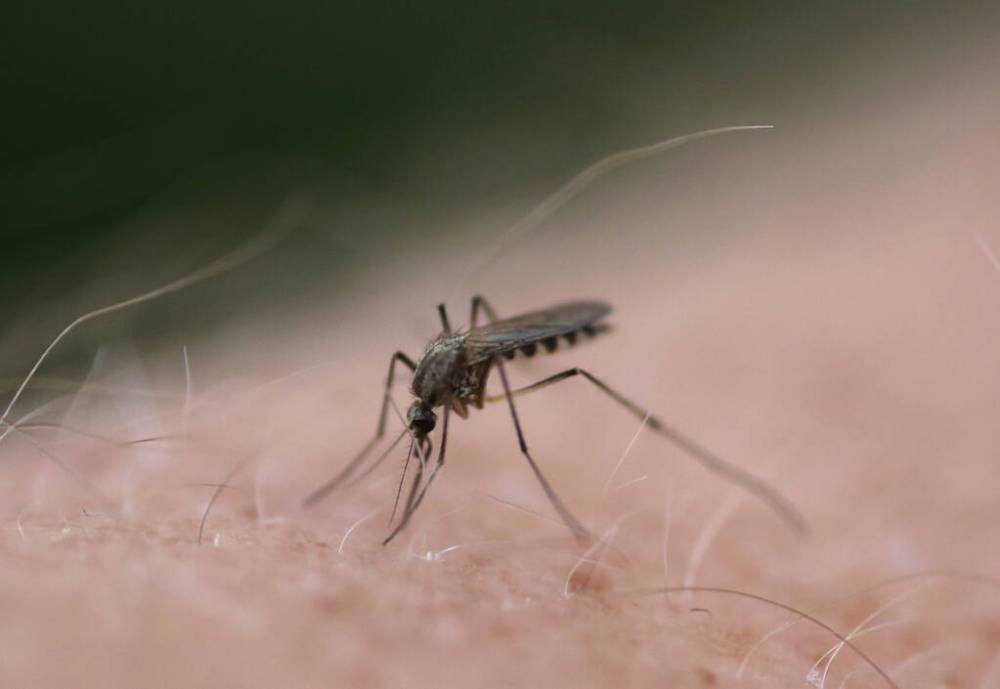City races to get ahead of potential swarms
Advertisement
Read this article for free:
or
Already have an account? Log in here »
To continue reading, please subscribe:
Monthly Digital Subscription
$0 for the first 4 weeks*
- Enjoy unlimited reading on winnipegfreepress.com
- Read the E-Edition, our digital replica newspaper
- Access News Break, our award-winning app
- Play interactive puzzles
*No charge for 4 weeks then price increases to the regular rate of $19.00 plus GST every four weeks. Offer available to new and qualified returning subscribers only. Cancel any time.
Monthly Digital Subscription
$4.75/week*
- Enjoy unlimited reading on winnipegfreepress.com
- Read the E-Edition, our digital replica newspaper
- Access News Break, our award-winning app
- Play interactive puzzles
*Billed as $19 plus GST every four weeks. Cancel any time.
To continue reading, please subscribe:
Add Free Press access to your Brandon Sun subscription for only an additional
$1 for the first 4 weeks*
*Your next subscription payment will increase by $1.00 and you will be charged $16.99 plus GST for four weeks. After four weeks, your payment will increase to $23.99 plus GST every four weeks.
Read unlimited articles for free today:
or
Already have an account? Log in here »
Hey there, time traveller!
This article was published 16/06/2022 (1239 days ago), so information in it may no longer be current.
Amid plenty of standing water and temperatures expected to push above 30 C in the coming days, mosquito season has arrived in Winnipeg.
It’s heavy work for the city’s insect control branch, which has brought on four helicopters to spray larvicide in hopes of mitigating the insect’s population growth, superintendent David Wade explained.
“We’re working overtime this weekend to make sure that we can get to each site basically by Monday, Tuesday,” he told the Free Press on Thursday.

Time is of the essence: the more significant rain the city gets, the more mosquito larvae appear in standing water. Hot weather speeds up the rate of mosquito development and growth.
The recent rainy week and upcoming heat are a perfect storm for swarms.
“We’re working around the clock right now to stay on top of the standing water that is out there and to control the mosquitoes in the larval stage before they get to the adult stage,” Wade said.
“It’s a lot easier to control them in the when they’re in the larval stage. We’re doing everything we can to prevent the mosquito population from getting too high.”
Along with the helicopters, as many as 80 city staff at any given time are tasked with manning trucks mounted with spraying equipment or strapped with backpack sprayers. There are thousands of standing water sites, and the city uses two larvicides to target the wrigglers who inhabit them: one that stops their ability to feed and another that stops them from reaching adulthood.
The insecticide used to spray adult mosquitoes, deltamethrin, is considered safe to use around humans but is considered a neurotoxin, and can cause allergic reactions and asthma.
There are 39 species of mosquito in Manitoba, with the most prevalent being “nuisance mosquitoes” — ones that bite and bother but don’t spread disease.
While relatively new to the city, there are mosquitoes in Winnipeg that could potentially spread West Nile virus. However, Wade said the weather, while good for nuisance mosquitoes, hasn’t been ideal for the more dangerous species.
“Depending on how the rest of the summer goes, the risk of West Nile virus may be lessened by the cool spring and very wet spring that we had,” he said. “But it does depend on the temperatures moving forward.”
Manitoba has not had to fog for mosquitoes since 2020, due to the dry conditions of the past two years.
Another insect that leaves some feeling bothered — cankerworms — have also come out in full swing. Wade explained they’re less dependent on the weather for their survival.
“They’re pretty resilient… If it’s cool, that slows down the road of development; if it’s hot, it speeds up the rate of development,” he said.
The caterpillars feed on trees and can cause defoliation — some less harmful, but large groups of cankerworms can strip entire trees and leave them more vulnerable to disease and insects. Tree banding is the best way to stop cankerworms, as they typically climb trees to lay their eggs.
Elm spanworms, on the other hand, typically emerge in late June and come out at night. At that point, however, much of the damage has already occurred. Elm spanworm larvae, typically hatched in mid-May to early June, feeds on leaves and can defoliate forest areas during an outbreak.
Wade said the city is reported more elm spanworms in recent years, and tree banding has no effect on mitigation. The only way to stop them is to use insecticides or egg parasitoids.
“Caterpillar populations tend to go in cycles. Some go in sharper peaks and valleys and others, it’s more gradual, but we’re definitely seeing an increase in spanworm populations in the city… But it is part of their natural cycle and, eventually, it will decrease again,” he said.
malak.abas@freepress.mb.ca

Malak Abas is a city reporter at the Free Press. Born and raised in Winnipeg’s North End, she led the campus paper at the University of Manitoba before joining the Free Press in 2020. Read more about Malak.
Every piece of reporting Malak produces is reviewed by an editing team before it is posted online or published in print — part of the Free Press‘s tradition, since 1872, of producing reliable independent journalism. Read more about Free Press’s history and mandate, and learn how our newsroom operates.
Our newsroom depends on a growing audience of readers to power our journalism. If you are not a paid reader, please consider becoming a subscriber.
Our newsroom depends on its audience of readers to power our journalism. Thank you for your support.





